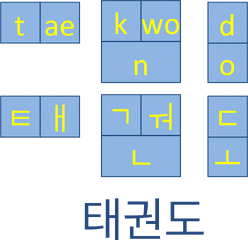Gwai Lo Dan
3rd Black Belt
- Joined
- Nov 3, 2010
- Messages
- 963
- Reaction score
- 171
I guessed so, like when I had asked in class whether the "kukkiwan" name is related to the words we say when bowing to the flags which to me sound like"kukki daiyo".Hahaha, you know they're different Korean spellings though, right?
In terms of the taste, I can't comment. My wife wanted to go to the Korean grocery store, and I noticed all the boxes with paste said "sammjang" or similar spelling. Maybe for fun one day in class I will refer to the soybean paste pattern.


